Molt refers to the process by which an animal sheds some or all of its outer layer, such as feathers, fur, or skin, in order to grow a new one(s). Molting is also referred to as shedding, sloughing, or ecdysis. This is a common phenomenon in animals, particularly birds, insects, reptiles, and crustaceans. During molt, the animal’s old outer layer is replaced by a new one that is larger, stronger, more vibrant, or better suited to the animal’s needs. Molts may occur regularly or be triggered by environmental factors, such as temperature changes or stress.
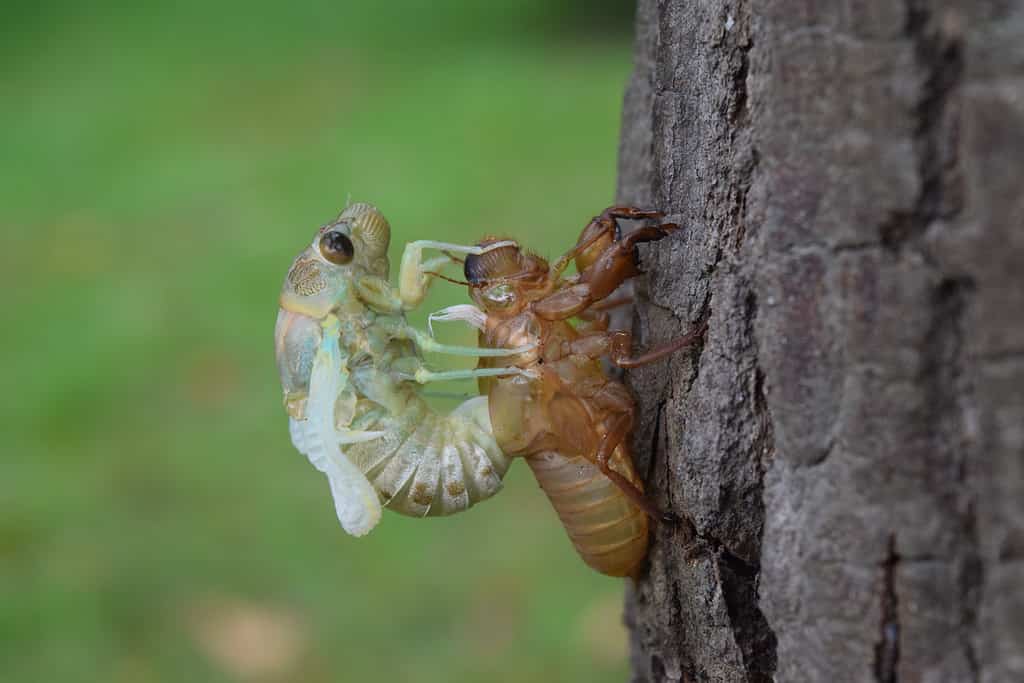
During molt, the animal’s old outer layer is replaced by a new one that is larger, stronger, more vibrant, and better suited to the animal’s needs.
©tienduc1103/Shutterstock.com
What Animals Molt?
Many different species across a handful of phyla molt (or moult, in British English), by a variety of means. Some avian species lose their feathers yearly, while the larval stage of moths and butterflies shed and regrown their exoskeletons numerous times during their brief lives. So, which animals molt? Keep reading to discover the animals that molt and the characteristics of each!
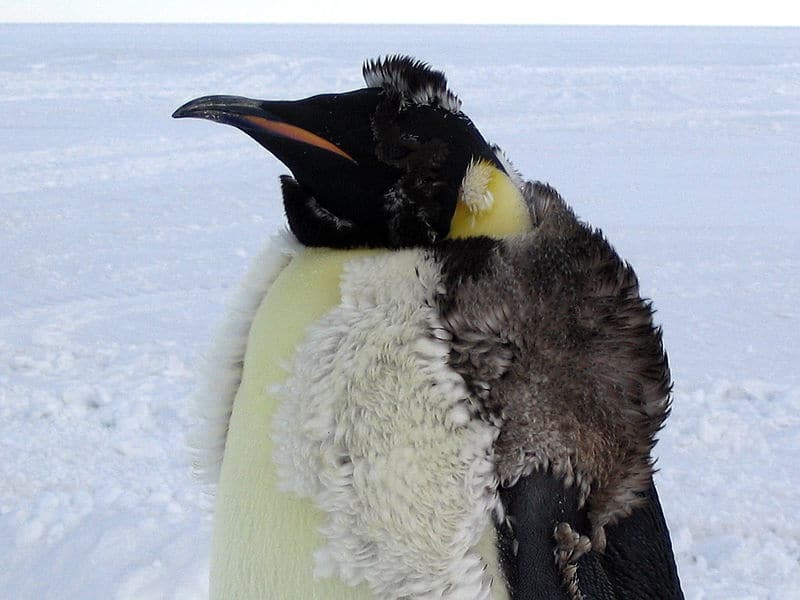
Most bird species molt their feathers once or twice a year. Pictured: A molting Emperor Penguin (
Aptenodytes forsteri)
©Carlie Reum, National Science Foundation, Public domain, via Wikimedia Commons – License
Birds
Molting is the process of shedding and replacing feathers in birds. This allows them to maintain their feathers’ integrity and functionality. Most birds molt once or twice a year, depending on the species, season, age, and hormonal cues. Migratory birds tend to molt after breeding and before migration, while non-migratory birds may molt according to the local climate and food availability. Some birds, like the Northern cardinal, molt once a year. Others, like the willow warbler, will have one complete molt after nesting and a partial molt to spiff up their plumage for the breeding season. Bobolinks and marsh wrens molt twice a year.
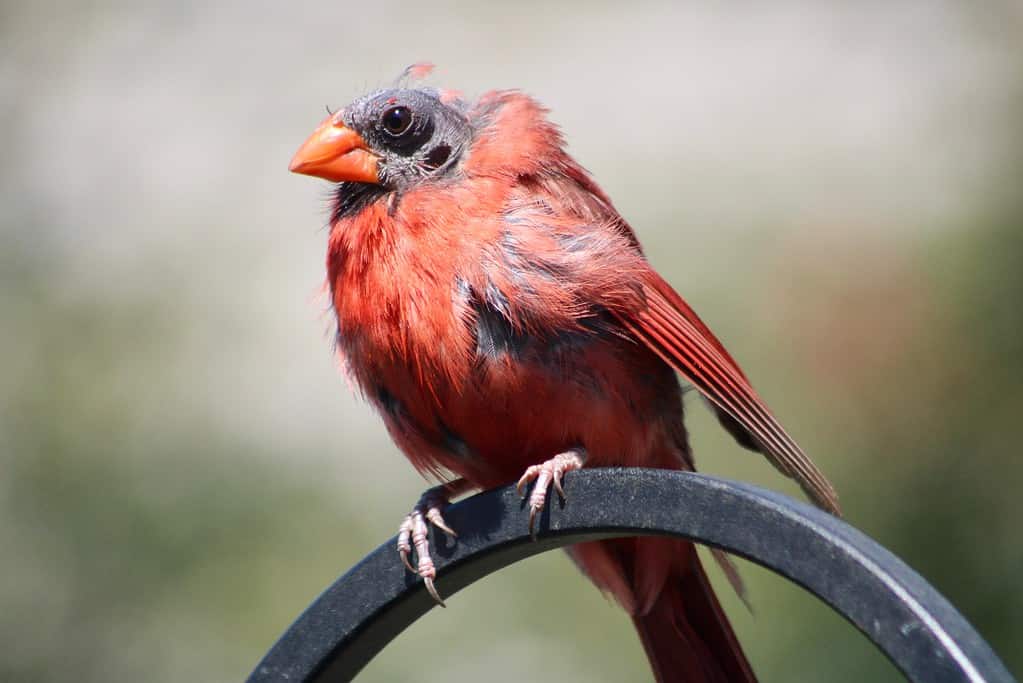
Some birds, like this
Northern cardinal
, molt once a year.
©Jaclyn Vernace/Shutterstock.com
Fledglings undergo a molting process known as post-juvenile molt. Post-juvenile molt usually occurs within a few months of the bird leaving the nest. During this molt, the bird’s feathers are replaced with new feathers that have the characteristics of adult plumage. The post-juvenile molt may be partial or complete, depending on the species. The post-juvenile molt enables fledglings to acquire plumage for camouflage, social signaling, and flight performance.

During post-juvenile molt the bird’s feathers are replaced with new feathers that have the characteristics of adult plumage.
©Tony Quinn/Shutterstock.com
Birds molt only some of their feathers at any given time, replacing them all gradually. However, some species of migratory birds (ducks, geese) shed their principal flight feathers all at once, keeping them grounded until they have regrown. This is the origin of the saying sitting duck, which refers to an easy target.
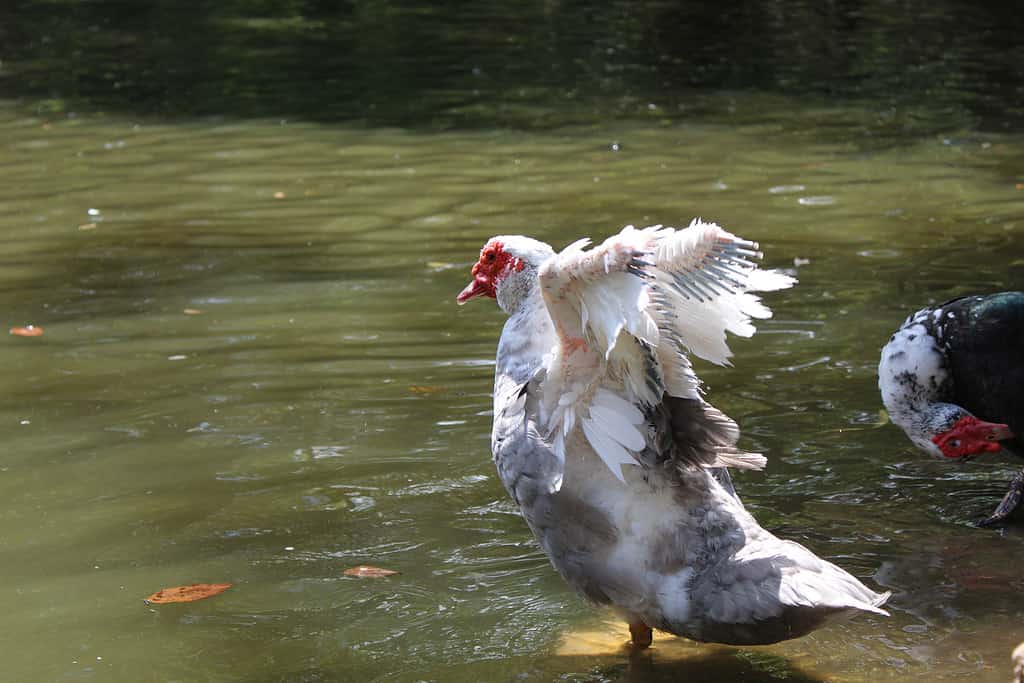
Ducks shed their principal flight feathers all at once, keeping them grounded until they have regrown.
©Laurania/Shutterstock.com
Insects
In insects, molting involves the process of shedding the old exoskeleton and replacing it with a new one. This allows for growth and development. During molting, the insect secretes a hormone called ecdysone. Ecdysone triggers the separation of the old exoskeleton, also called a cuticle, from the underlying epidermis. The insect then inflates itself using air or water, splitting the old cuticle and crawling out of it. In its place is a soft, pliable new cuticle, which accommodates new growth. Once it has shed its old skin, the insect pumps up its new cuticle with hemolymph, which hardens the new exoskeleton. Molting typically occurs several times during an insect’s life, with the frequency and duration dependent on the species.
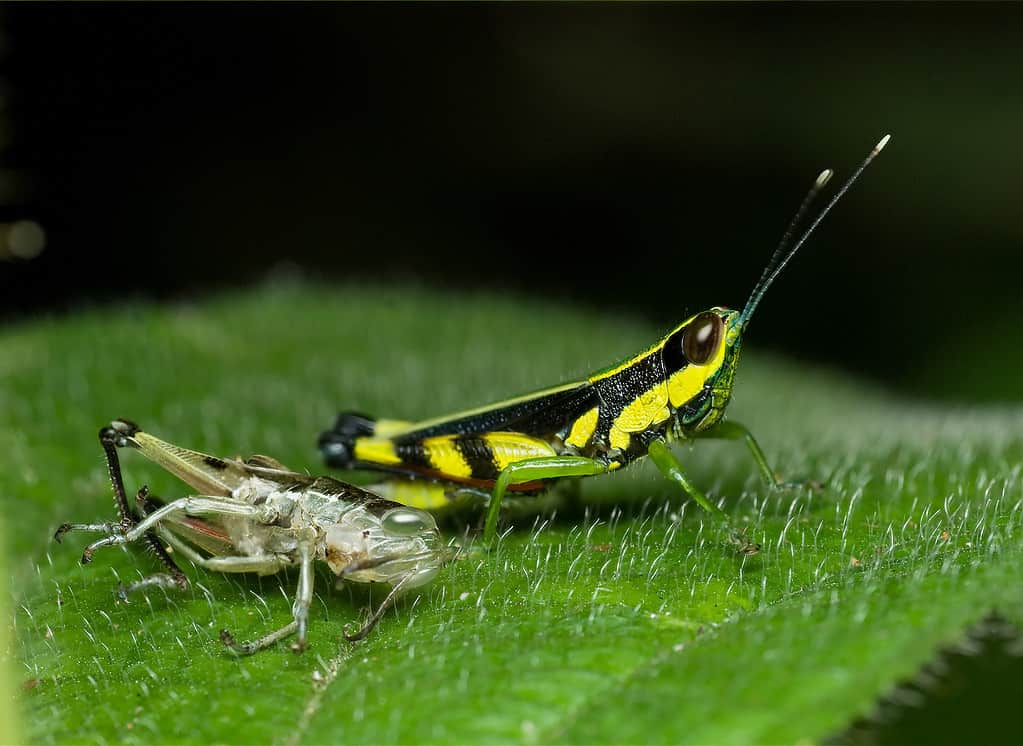
In insects, molting involves the process of shedding the old exoskeleton and replacing it with a new one,l ike this freshly molted grasshopper nymph.
©kurt_G/Shutterstock.com
Insects molt throughout their larval or nymph stage. The larvae of bees (grubs), butterflies (caterpillars), and moths (caterpillars) undergo a series of molts prior to pupating and metamorphosing into their adult forms. Other insects, like grasshoppers, crickets, and praying mantises, molt several times as nymphs. Nymphs look similar to their adult forms minus the wings.
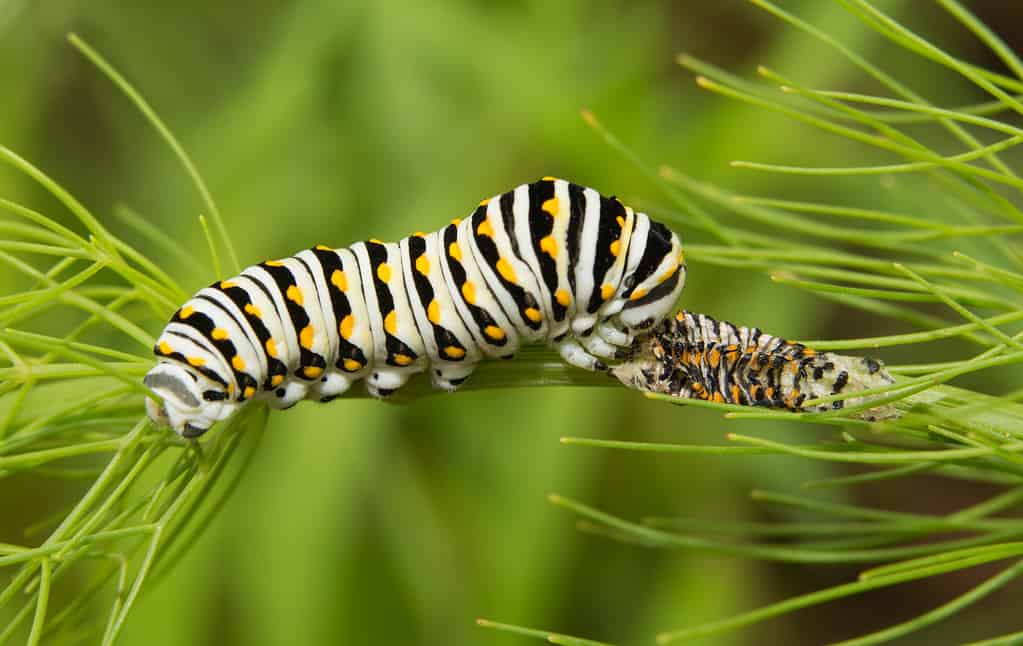
A black swallowtail caterpillar will molt several times before metamorphosing into a black swallowtail butterfly.
©Sari ONeal/Shutterstock.com
Crustaceans
The molting process of crustaceans is remarkably similar to that of insects. Crustaceans shed their old exoskeletons replacing them with new, larger ones to accommodate growth and repair damage. During molting, crustaceans are vulnerable to predation and injury, so they usually hide or burrow until their new exoskeleton hardens by calcification. Molting occurs regularly throughout a crustacean’s life, with the frequency and duration depending on the species. Crabs and lobsters molt less frequently as they reach maturity, while shrimp and krill molt more frequently to sustain their rapid growth and reproduction.
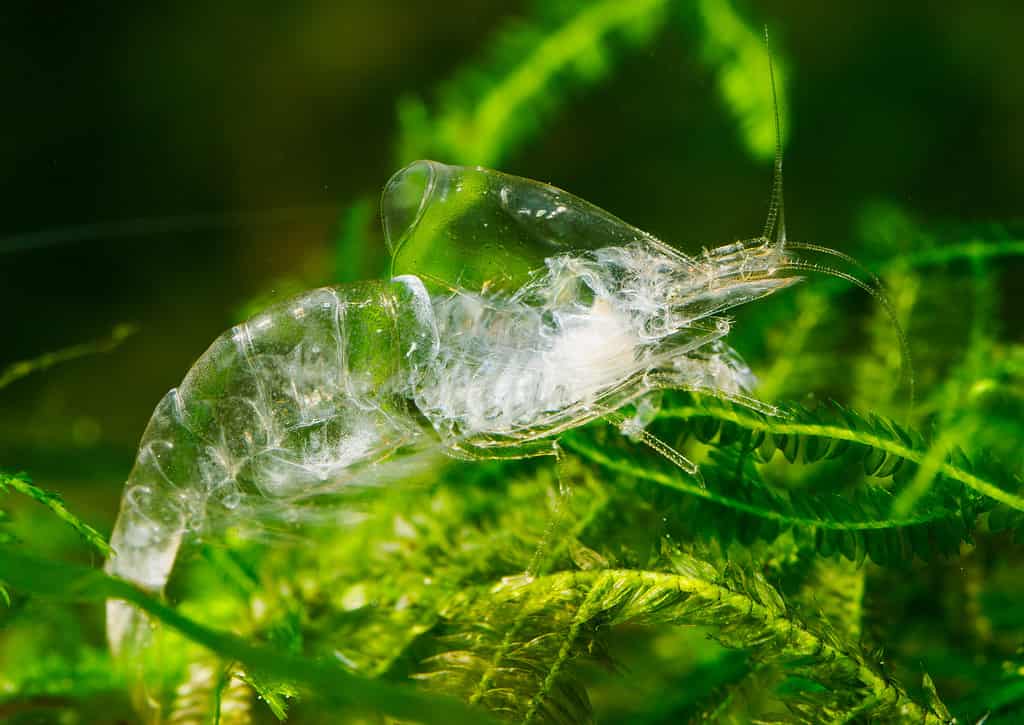
Crustaceans shed their old exoskeletons replacing them with new, larger ones to accommodate growth and repair damage. Pictured: the empty exoskeleton of a shrimp.
©Toxotes Hun-Gabor Horvath/Shutterstock.com
Reptiles
Molting in reptiles is also known as shedding or ecdysis, and involves the process of shedding old skin and growing a new one. The process is initiated by hormones that stimulate the reptile’s epidermal cells to produce a new layer of skin under the old one. The new skin layer secretes enzymes that break down the connection between the old skin and the underlying tissues.
The reptile will then rub against objects to scratch its body to facilitate shedding. The old skin gradually loosens and separates, revealing a new, soft skin underneath. Once the old skin is shed, the reptile expands its body and the new skin hardens, becoming tougher and more resistant to water loss and infection. Molting in reptiles may occur regularly, according to a growth cycle, or in response to external factors such as stress, temperature, humidity, or light. Some reptiles, such as snakes and lizards, shed their skin in one piece. Turtles and crocodiles, however, shed their skin in small patches.
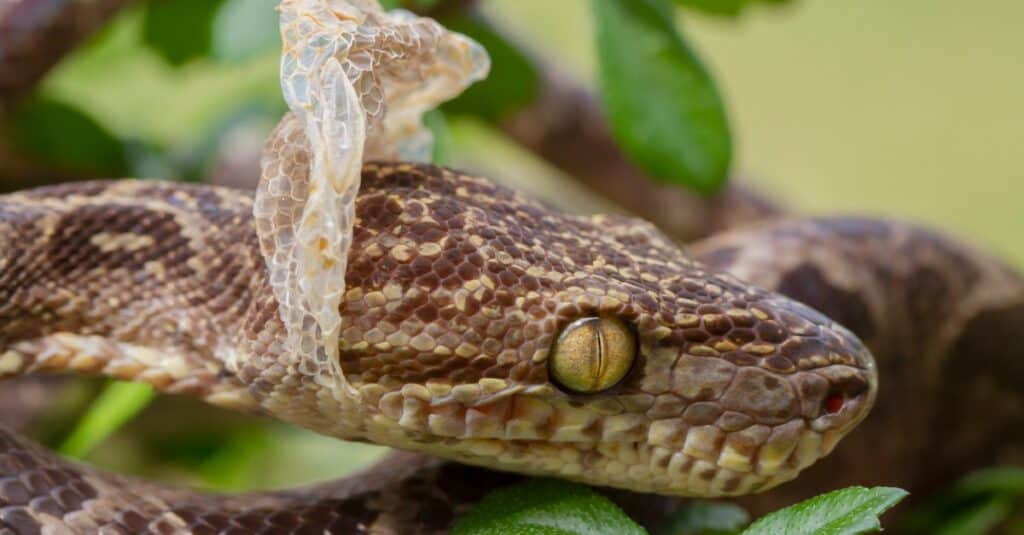
Snakes shed their skin in one piece.
©iStock.com/Mark Kostich
Arachnids
Arachnids, which include scorpions, spiders, ticks, and mites, have a hard, outer exoskeleton that restricts their growth and movement. To accommodate their growth arachnids must periodically shed their exoskeleton and replace it with a larger one. The process of molting is triggered by hormones that stimulate the arachnid’s epidermal cells to produce a new layer of cuticle under the old one. The old cuticle then splits, and the arachnid wriggles out of it, with the help of special appendages and muscles. Once removed from the confines of its old exoskeleton, the arachnid expands its body and limbs to its new size and hardens the new cuticle by sclerotization. Molting allows arachnids to repair damage, shed parasites, and escape predation.
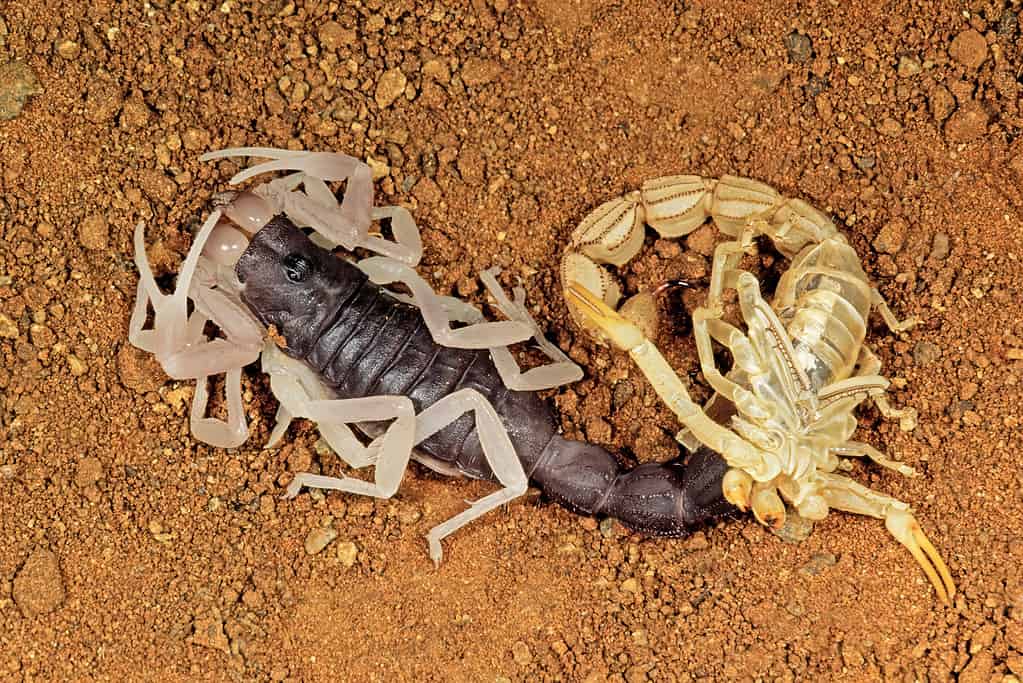
To accommodate growth, arachnids must periodically shed their exoskeleton and replace it with a larger one.
©EcoPrint/Shutterstock.com
Mammals
Mammals do not molt in the way that birds, insects, and arachnids do. However, some mammals do undergo a process that resembles molting, such as shedding their fur or skin periodically.
Dogs, cats, and horses shed their coats seasonally to adapt to changes in temperature. This shedding is typically a gradual process, in which the fur falls out in small clumps or single hairs rather than all at once. Other mammals, such as deer and antelope, shed their antlers annually, which is a process that involves the shedding of bony tissue. Some mammals (including humans!) shed their skin periodically, although this process is not as pronounced or dramatic.
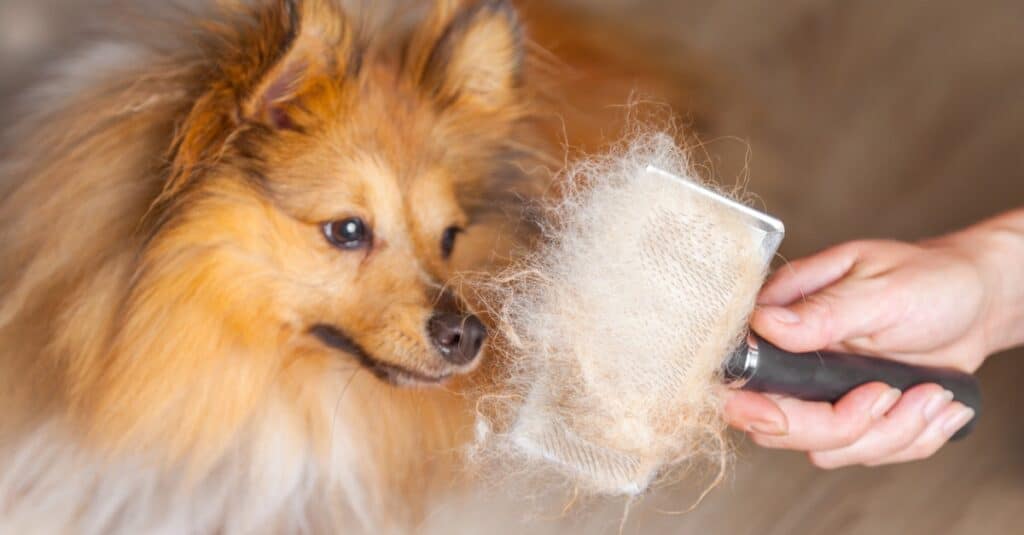
Dogs, cats, and horses shed their coats seasonally to adapt to changes in temperature.
©Filmbildfabrik/Shutterstock.com
Mollusks
Some species of mollusks shed their outer layer or shell and grow a new one. This process is common among gastropods (snails and slugs) and cephalopods (squid, octopus, and nautilus).
In gastropods, the molting process is gradual, as a new layer is created on top of the existing one.
In cephalopods, the entire outer skin is shed, including the shell in species that have them. The process is triggered by hormonal changes and is usually rapid, taking only a few hours to complete.
It is important to note that not all mollusks undergo a molting process. Bivalves, such as clams and oysters, and scallops do not shed their shells but instead, grow new shell material continuously throughout their lives.
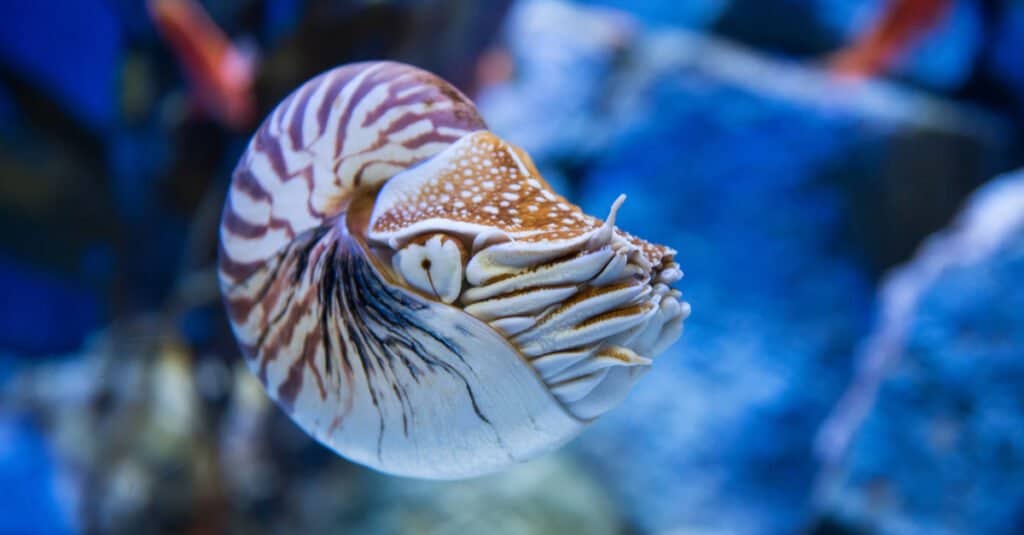
Some species of mollusks, like this nautilus, shed their outer layer or shell and grow a new one.
©kikujungboy CC/Shutterstock.com
Facts About Molting
- When an animal is molting, it is often more vulnerable to predators because its outer layer is not fully developed or protective.
- Growing a new outer layer requires a lot of energy, so animals may need to eat more during the molting process to fuel their growth.
- Some animals molt to grow a larger size, while others molt to replace damaged or worn-out outer layers. Some animals also molt to change their appearance for purposes such as camouflage or attracting a mate.
- The timing of molting can be influenced by factors such as daylight, temperature, and food availability.
- Some animals undergo many molts throughout their lives as they grow and develop, while others, such as birds, may only molt once or twice a year.
- Examining the molt pattern of an animal can be used to determine its age, particularly in birds.


























